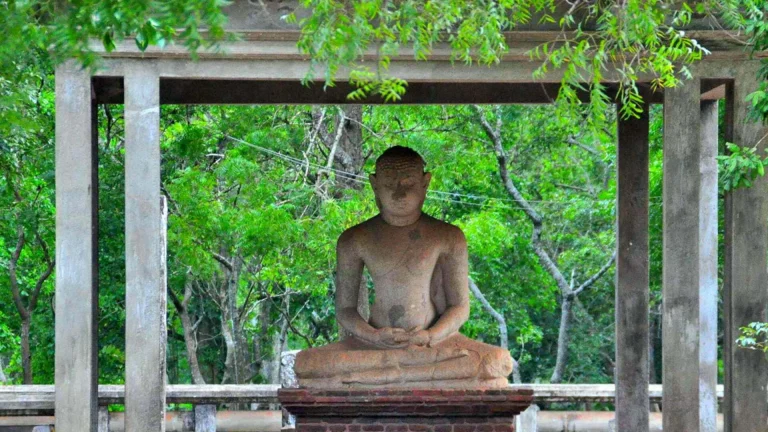All Provinces
Discovering the Serenity of Anuradhapura Kala Wewa, Sri Lanka
Sri Lanka, a country rich in history and natural beauty, offers countless opportunities for exploration. Among its many treasures, the ancient irrigation marvel of Kala Wewa, located in Anuradhapura, stands out as a destination where history, nature, and tranquility converge. If you’re planning a visit to Sri Lanka, make sure to add Kala Wewa to your travel itinerary. This hidden gem offers a serene escape from the bustling cities, while also giving you a glimpse into the ingenuity of ancient Sri Lankan civilization.
The Historical Significance of Kala Wewa
Kala Wewa is one of the largest and oldest man-made reservoirs in Sri Lanka, dating back to the 5th century AD. It was built during the reign of King Dathusena, a ruler renowned for his contributions to the island’s hydraulic civilization. The reservoir is a testament to the advanced engineering skills of the ancient Sri Lankans, who created an intricate system of tanks and canals to ensure a reliable water supply for agriculture.
With a capacity of 123 million cubic meters, Kala Wewa played a vital role in supporting rice cultivation in the dry zone. Today, it continues to be an important source of irrigation for the surrounding farmlands, while also serving as a popular destination for tourists and locals alike.


What to Expect When Visiting Kala Wewa
Location and Accessibility
Kala Wewa is located approximately 40 kilometers from Anuradhapura, in the North Central Province of Sri Lanka. The drive from Anuradhapura to Kala Wewa takes about 1 hour, and the route is filled with scenic views of the countryside. Visitors can access the reservoir via Dambulla or Kekirawa, making it a convenient stop for those traveling to or from the cultural triangle, which includes Sigiriya, Polonnaruwa, and Anuradhapura.
Natural Beauty
Surrounded by lush greenery and rolling hills, Kala Wewa offers stunning views of the Sri Lankan landscape. The calm waters of the reservoir stretch out into the horizon, reflecting the sky and creating a mirror-like effect that is perfect for photography enthusiasts. You’ll also see local wildlife, including water buffalo, migratory birds, and occasionally, elephants.
The Avukana Buddha Statue
One of the main attractions near Kala Wewa is the Avukana Buddha Statue, a 12-meter tall standing Buddha carved out of a single granite rock. This iconic statue, believed to have been constructed in the 5th century, stands just a short distance from the reservoir. The impressive craftsmanship of the statue, combined with its serene location, makes it a must-see for visitors to Kala Wewa.
Activities at Kala Wewa
While Kala Wewa is primarily a peaceful retreat, there are several activities to enjoy:
Bird Watching – The reservoir is home to a variety of bird species, making it an ideal spot for bird watchers. Keep an eye out for egrets, herons, and even kingfishers.
Fishing – Local fishermen can often be seen at work on the reservoir, and you may even have the opportunity to join them for a fishing experience.
Boat Rides – Take a boat ride on the calm waters of Kala Wewa for a closer look at the reservoir’s natural beauty.
Picnicking – The peaceful ambiance of the area makes it perfect for a relaxing picnic. Find a quiet spot by the water’s edge, enjoy the gentle breeze, and take in the stunning surroundings.







Best Time to Visit Kala Wewa
The best time to visit Kala Wewa is during the dry season, from May to September. During this time, the weather is more favorable for outdoor activities, and the water levels of the reservoir are typically lower, allowing for better views of the surrounding landscape. However, if you’re a fan of lush greenery, the monsoon season (October to December) can offer a different kind of beauty, with the area around Kala Wewa becoming even more verdant.
Tips for Travelers
- Carry Water and Snacks: There are limited facilities around the reservoir, so it’s advisable to bring your own water and snacks if you plan to spend a few hours exploring the area.
- Respect Local Customs: As Kala Wewa is located in a rural part of Sri Lanka, it’s important to dress modestly and respect local customs, especially when visiting religious sites like the Avukana Buddha Statue.
- Be Mindful of Wildlife: While it’s exciting to spot wildlife, it’s essential to keep a safe distance and not disturb the animals. This is particularly important if you come across elephants in the area.
How to Reach Kala Wewa
If you’re traveling from Colombo, Kala Wewa can be reached by car in about 3.5 hours. The drive is straightforward, and you can combine your trip with other nearby attractions, such as the ancient city of Anuradhapura or the Sigiriya rock fortress. For those relying on public transportation, buses run from Colombo to Anuradhapura, and from there, you can hire a tuk-tuk or a private car to reach the reservoir.
Conclusion
Kala Wewa offers a peaceful retreat for those looking to experience the natural beauty and historical significance of Sri Lanka. Whether you’re an avid history enthusiast, a nature lover, or simply seeking a quiet escape, this ancient reservoir has something to offer. With its rich history, serene environment, and proximity to other cultural landmarks, Kala Wewa is a must-visit destination in the heart of Sri Lanka.
By including Kala Wewa in your travel plans, you’ll not only witness one of the country’s greatest engineering feats but also enjoy a memorable experience amidst nature.
See More Tourist Places Click Here

















